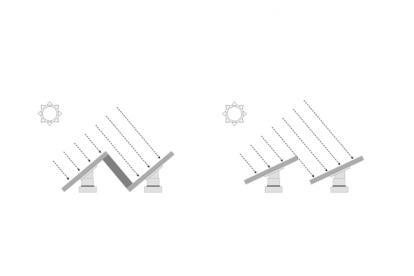
Cultural heritage: Indigenous and cultural heritage values driving sustainable development
by Flavia Kiperman
View post

Glare off the reflective surfaces of photo-voltaic (PV) solar panels can create both a safety hazard and an annoyance to local residents and communities, especially when they are installed in large quantities on solar farms.
Glare is unwanted reflected light. Ever since the advent of multi-storey buildings with large glass facades, reflective glare has been a visual impact issue. Over the past few years, the fast-paced development and mainstream acceptance of PV solar farms has created another source of this same problem. For this reason, we are seeing optical glare management become part of many jurisdictional requirements for managing adverse project impacts on surrounding areas. For example, here in Canada, the Alberta Utilities Commission Rule 007 – Applications for Power Plants, Substations, Transmission Lines, Industrial System Designations, Hydro Developments and Gas Utility Pipelines, now contains requirement to address the issue.
During our recent assessments of solar farm facilities involving fixed-axis, single axis tracking, and variable tracking (e.g., back-tracking) PV solar panel support systems, we’ve considered the impact of the following optical glare conditions:
Daytime
Night-Time
In relation to the overall project development timeline, we recommend completing a glare study once the preliminary solar panel layout and technology selection has been completed (i.e., typically at the FEED study stage). When conducting a glare assessment, we utilize Solar Glare Hazard Analysis Tool (SGHAT) software in combination with Threshold Increment (TI) analysis techniques that SLR’s own team of experts have developed.
What is Solar Glare Hazard Analysis Tool (SGHAT) software?
SGHAT is the industry-accepted means of assessing the effects of solar panel glare and is certified by the Federal Aviation Authority (FAA) and Transport Canada’s requirements defined by TP1247E - Aviation: Land Use in The Vicinity of Aerodromes.
The software measures the potential ocular impact of any proposed solar facility at specific locations. Solar Glare Ocular Hazard Plots are developed and compared against acceptability criteria to determine and assess the potential for glare.
It is also important to consider the movement of the solar panel, including when panel positions are optimized to capture the maximum energy potential. The latest systems offered on rotating systems include a “backtracking” mode which is factored into our analysis. Additionally, we also consider the shading effects from the neighbouring row of panels, which often reduces the glare hazard potential.

backtracking operations avoids shading
Graphic Credit: Gómez-Uceda, F.J.; Moreno-Garcia, I.M.; Jiménez-Martínez, J.M.; López-Luque, R.; Fernández-Ahumada, L.M. Analysis of the Influence of Terrain Orientation on the Design of PV Facilities with Single-Axis Trackers. Appl. Sci. 2020, 10, 8531.
Further to completion of the glare hazard analysis using SGHAT, we ensure a detailed analysis of “real-world” solar farm panel operations is also completed for road traffic, rail traffic and residence nuisance glare. This involves a computational assessment using our Threshold Increment (TI) analysis software.
What is Threshold Increment (TI) Analysis?
We carry out reflectivity TI Value calculations using a four-stage screening process and our TI software.
The TI value is defined as: "The measure of disability glare expressed as the percentage increase in contrast required between an object and its background for it to be seen equally well with a source of glare present. Higher values of TI correspond to greater disability glare." For simplicity, the TI value is the intensity of the glare in contrast to the background of the glare. We have established different TI Value thresholds to assessment different situations, including (motorist) traffic disability glare, pedestrian discomfort glare and rail traffic disability glare.
Harnessing the power of the sun using PV solar panels supports our goals of reducing carbon emissions. However, in doing so it’s important to also consider how optical glare can affect your project stakeholders and the general public. Before starting work on your solar project, consider what industry best practices should be used to assess the risk solar glint and glare can have and work with a professional to find and implement widely solutions that will be accepted by all project stakeholders.

by Flavia Kiperman

by Jasper Schrijvers , Matthew Hoare

by Clodagh Connolly, Nicola Inge, Andres Schottlaender